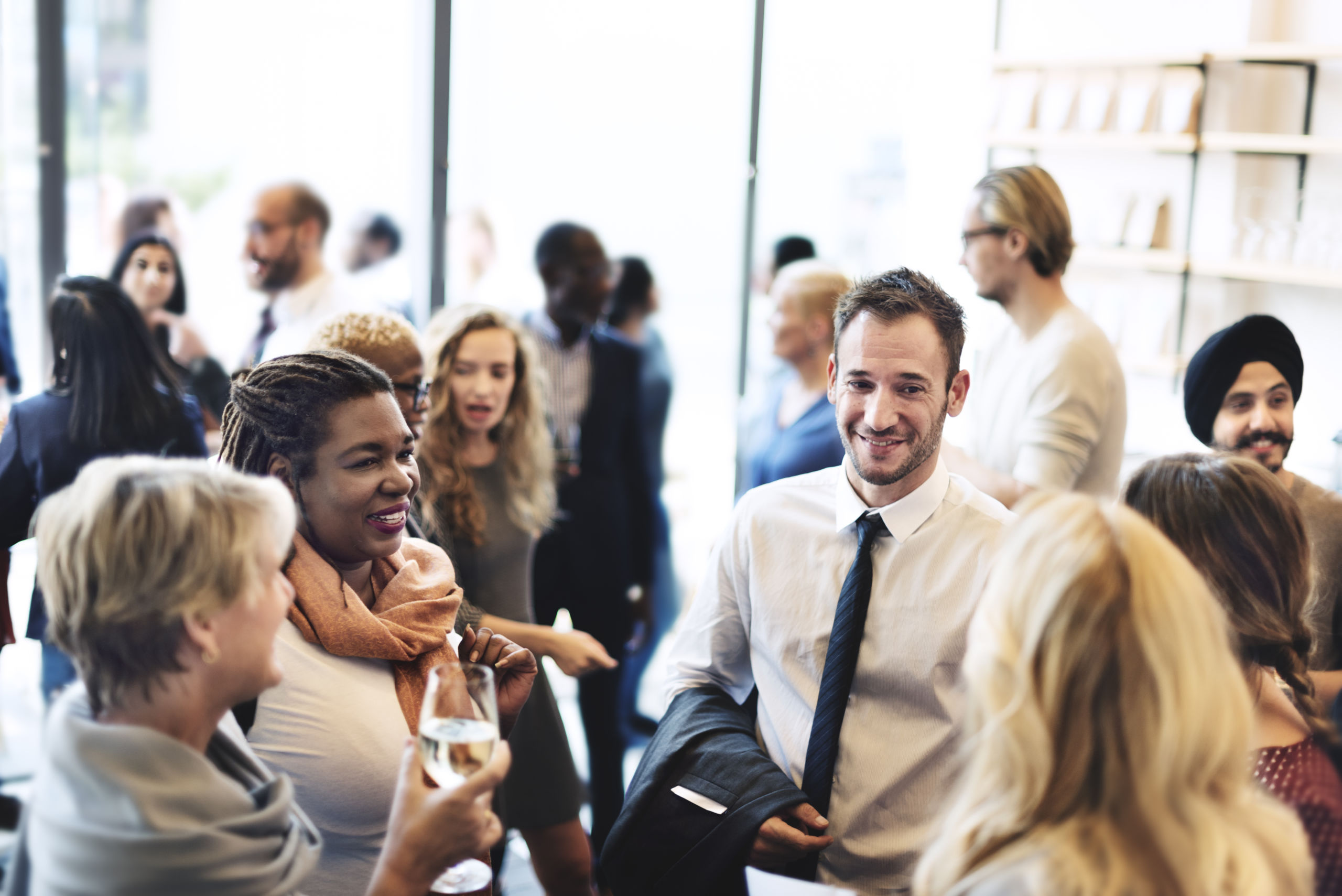
Get Paid to Share Your Expertise
Help shape the future of business through market research studies.
See Research StudiesNetworking parties hold so much promise. A mixer hosted by a large firm, a professional association or a business district is an opportunity to gain social capital, which has come to be seen as a critical factor in success. Many people devote significant money and time to these events with the simple goal of making new contacts.
But there has been little research about how people interact at mixers. Lessons from social science are discouraging; researchers have found that a person’s past contacts tend to limit future contacts. Furthermore, a phenomenon known as homophily — the tendency of people to bond with others similar to themselves, in terms of sex, race, education and career — suggests that guests at mixers won’t mingle in diverse groups.
To learn whether mixers are effective, Professors Paul Ingram and Michael Morris conducted an unusual experiment. They arranged for the School’s Executive MBA Programs to hold an after-work event, similar to dozens EMBA hosts every year, for four classes. Early on a Friday evening, about 100 guests — managers, entrepreneurs, consultants and bankers — gathered in a reception room in Warren Hall, where they mingled over hors d’oeuvres, wine and beer. To get a precise record of whom each guest met during the night, and the duration of these interactions, each wore a small electronic device called an nTag that tracked their encounters.
Before the mixer, the executives had used an electronic facebook to register which of the guests they already knew. On average, the executives were on friendly terms with about one-third of the others; the rest were unknown to one another. When asked why they were attending the event, 95 percent of the guests said they wanted to meet new people.
“Overwhelmingly, people come to these types of events with an important purpose in mind,” says Ingram. “And that is to make new connections that may help with their careers.” Given the ratio of friends to strangers at the mixer, it seemed the guests wouldn’t have much trouble. But the nTags showed that the average guest had 14 encounters during the night and that friends accounted for a disproportionate half of these encounters.
 The reason, the researchers say, is comfort. “It’s challenging to make new connections,” says Morris. “If you stay with your friends, there’s no risk they won’t get your jokes or that they won’t accept you. And comfort is not to be derided — these are social events, after all.”
The reason, the researchers say, is comfort. “It’s challenging to make new connections,” says Morris. “If you stay with your friends, there’s no risk they won’t get your jokes or that they won’t accept you. And comfort is not to be derided — these are social events, after all.”
Ingram and Morris point out that people manage to make some new contacts at mixers; they just don’t maximize their opportunities. The researchers advise those who really want to meet new people to show up alone: “Don’t go with a cluster of your friends, or you’ll end up spending a lot of time with them,” says Ingram. “Or you’ll be introduced to people who are already acquainted with your friends and who are not necessarily broadening your network in the best way.”
Although the guests spent much of their time with their friends, they did manage to mingle with people different from themselves, the researchers found. There was surprisingly little evidence of homophily at the mixer. “People don’t seem concerned about these factors — race, gender, job — and will basically talk to anybody,” says Ingram. “So this does indicate that these events are good ways for firms to encourage diversity and mixing between people who do different types of work.”
Ingram and Morris discovered some distinct patterns through their analysis of the event. Early in the evening, there were more encounters between people of the same gender, whereas later there were more between people of opposite genders. This is because people do what is easiest and most comfortable — meeting others like themselves — at the beginning of an event but gradually break out of their comfort zone. There’s also a “part of the party” effect that establishes a feeling of comfort, says Ingram. “Over the course of a mixer, people establish a social bond that extends to everyone in the room,” he says. “The party takes on a life of its own, and demographic categories matter less.”
The study also offers a bit of reassurance to anyone who has ever attended a mixer and spent the whole time chatting with friends and acquaintances. Though many of the executives who attended the EMBA event made fewer new contacts than they’d intended, they said they valued the opportunity to strengthen their existing relationships. “Relationships have to be maintained,” Morris explains. “We can turn acquaintances into true friends by having more personal conversations than we’ve had before. Mixers turn out to be very good for that.”
Read the original piece on Columbia Business School’s Ideas and Insights blog.
Ivy Exec is proud to announce its partnership with Columbia Business School, to bring an insightful collection of thought leadership pieces for the modern-thinking strategist in finance, leadership and more to its platform.

 Columbia Business School
Columbia Business School